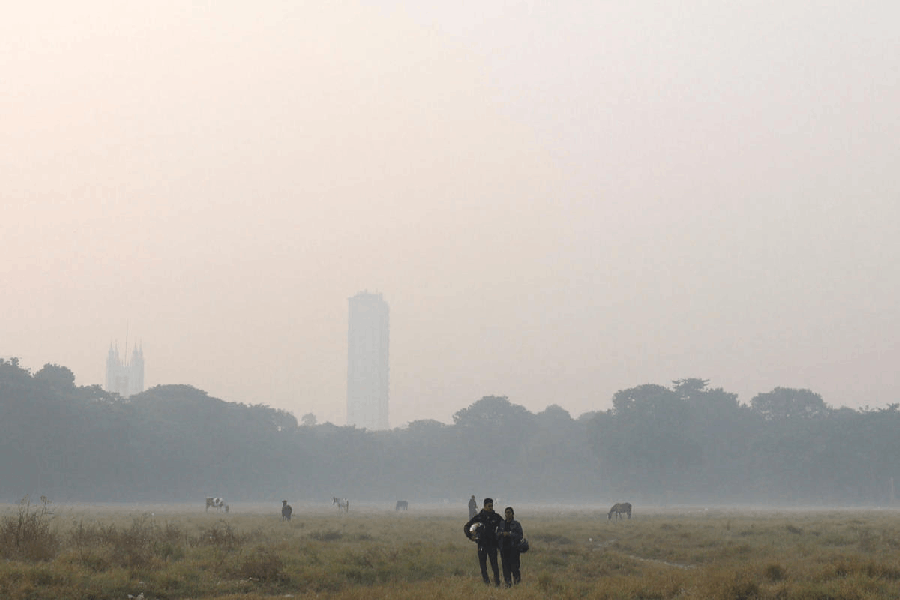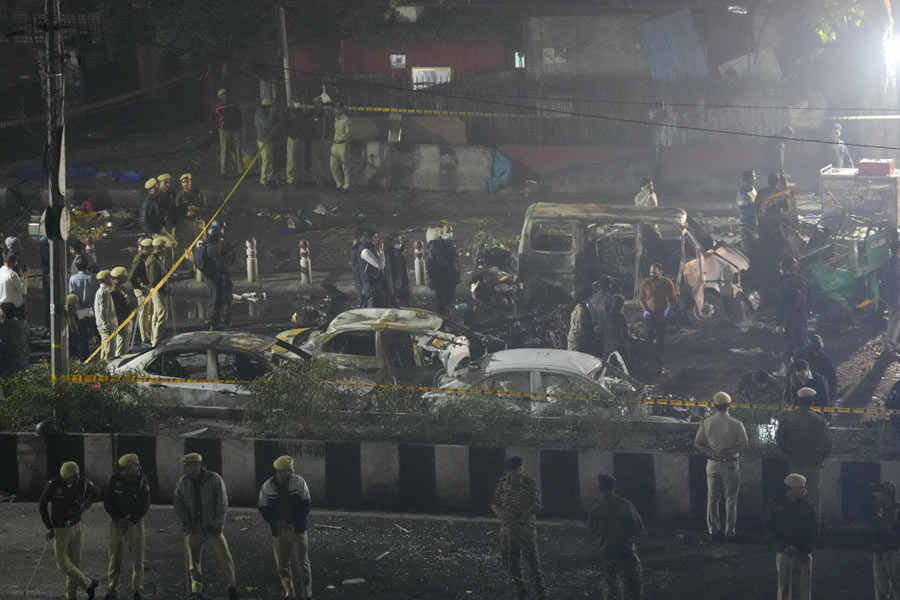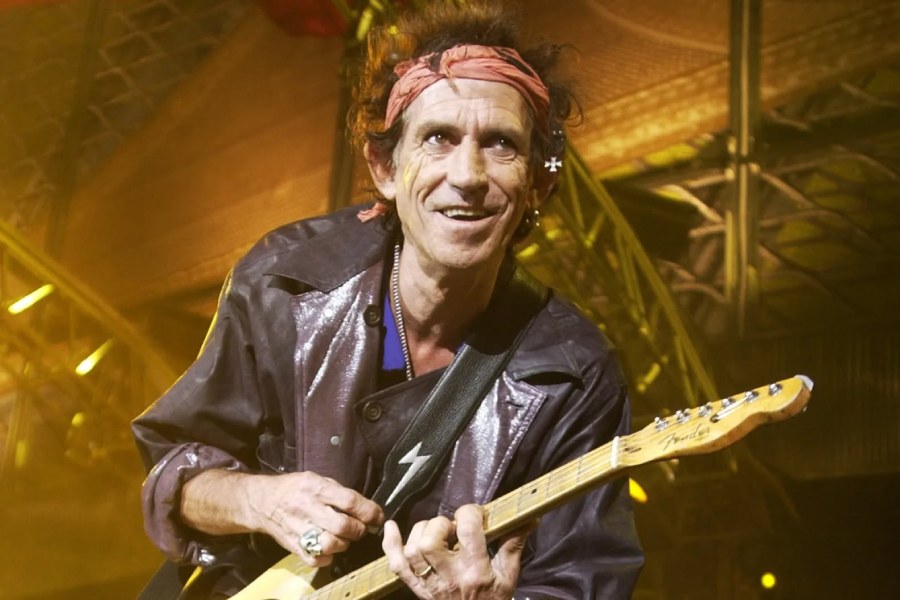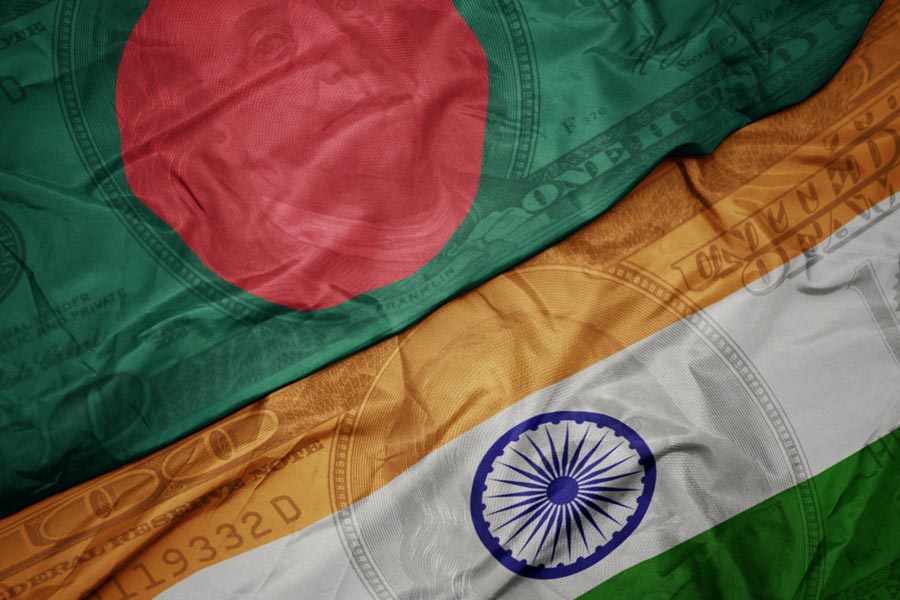Lucknow, Nov. 6: The Bahujan Samaj Party MP picked up in Delhi in connection with a domestic help’s murder was declared “found dead in encounter in Bhadohi” way back in October 1998.
That was four years before Dhananjay Singh became MLA for the first time in 2002. Four months after the encounter, the “dead man” walked back into life, hale and hearty.
A police report to the National Human Rights Commission (NHRC) in October 1998 had mentioned the deaths of “four criminals”, including the dreaded Dhananjay Singh, in the encounter. But the panel found the report unconvincing and ordered its own probe, which revealed the encounter was fake.
According to an order by the NHRC in the case, the Sant Ravi Das Nagar SP had informed the commission in October 1998 that “four criminals had been killed in an encounter with police” in Bhadohi.
“It was reported that secret information had been received by the police that on 17 October 1998, one Dhananjay Singh, a dreaded criminal carrying a reward of Rs. 50,000 on his head, would commit a dacoity at the petrol pump of one Satyanarayan Harsh on Mirzapur-Bhadohi Road,” the order said.
Accordingly, Bhadohi circle officer Akhilanand Misra had set up three police teams and sent them to the spot.
Around 11.30am that day, the police saw four persons heading to the petrol pump. The quartet fled into the nearby jungles on seeing the police, but somewhere along the way “the police were fired upon and the police party returned fire”, the report to the NHRC said.
“After 15 minutes of firing, the police party at the site found four dead bodies, including one of the dreaded criminal, Dhananjay Singh.”
Finding the police version unconvincing, the NHRC ordered its investigation wing to look into the matter. “Accordingly, a team headed by a DSP conducted an inquiry. That report indicated the alleged encounter was fake,” an NHRC order asking state police to prosecute the encounter cops said.
On the basis of an inquiry by the CB-CID, a case was registered against 36 people, including 34 police officers. The trial is still continuing in the Bhadohi district and sessions court.
The four victims of the encounter were Om Prakash Yadav, Ajay Kumar Singh, Krisan Harijan and Shamim Natte, all in their twenties. Om Prakash, the nephew of Bhadohi CPM leader Phoolchand Yadav, was passed off by the police as Dhananjay.
Phoolchand is believed to have told the police that it was his nephew Om Prakash, not Dhananjay, who was killed in the encounter but “they refused to believe me”. So, Phoolchand moved the court and the NHRC.
The police were baffled because Dhananjay could not be seen anywhere amid the row over his identity, sources said.
Earlier in 1998, Dhananjay had been declared “a dreaded criminal” and was facing 12 cases of murder and dacoity. He resurfaced in February 1999 and found the situation favourable for him in eastern Uttar Pradesh.
Sources said he emerged an unchallenged “Thakur don of eastern Uttar Pradesh” as, by 1999, the dreaded Brajesh Singh gang of Varanasi was on the run and the Brahmin caste gangs of Gorakhpur had disintegrated.
Dhananjay first made the Uttar Pradesh Assembly from Rarhi in 2002 as an Independent. Between 2003-06, when Mulayam Singh Yadav was in power, he grew close to the government. In 2007, when Mayawati came to power, he joined the BSP that showcased him as the party’s “Thakur face”.
“He kind of became the Raja Bhaiyya of the BSP,” a Congress leader said.
In 2009, he was elected BSP MP from Jaunpur amid a row over the mysterious poll-eve death of his nearest rival. In 2010, when the Rs 5,000-crore health scam broke, his links with former health minister Babu Singh Kushwaha made headlines. He was arrested and later released.
In 2011, Dhananjay fell out of Mayawati’s favour in connection with a double murder and his secret meeting with the expelled Samajwadi leader, Amar Singh. But his suspension was revoked the same year.
In January this year, his name figured in an FIR when Anil Mishra, one of his associates, was killed in Buxa ka Purwa in Jaunpur. He was, however, not arrested for lack of evidence.











